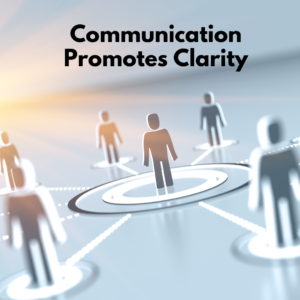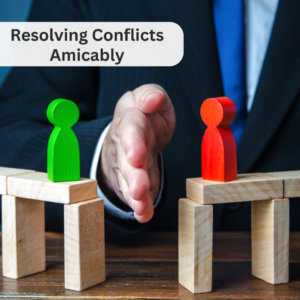Conflicts are inevitable in any relationship or setting, whether it’s at work, within families, or between friends. What distinguishes successful resolutions from prolonged disputes often boils down to effective communication. The ability to communicate openly, honestly, and respectfully is paramount in navigating and resolving conflicts. This article suggests how dialogue dynamics can stand as the cornerstone of conflict resolution.
How Communication Fosters Conflict Resolution
Firstly, communication fosters understanding. Conflicts often arise due to misunderstandings, differing perspectives, or unmet expectations. By engaging in open dialogue, parties involved can express their thoughts and feelings, gaining insights into each other’s viewpoints. This understanding is crucial for finding common ground and moving towards a resolution.
Secondly, communication encourages empathy. When individuals communicate their feelings and concerns, they humanize the conflict. Empathy reduces hostility and facilitates a more collaborative approach to problem-solving.
Moreover, communication promotes clarity. Clear and precise communication helps in articulating issues, defining boundaries, and outlining desired outcomes. Clarity minimizes confusion and reduces the chances of further misunderstandings or misinterpretations.
Furthermore, communication builds trust. Honest and transparent communication demonstrates sincerity and builds trust between conflicting parties. Trust is essential for cooperation and compromise, enabling individuals to work together towards mutually agreeable solutions.
Effective communication also encourages active listening. Conflict resolution isn’t just about speaking; it’s equally about listening. Active listening involves paying attention to what the other person is saying without interruptions, demonstrating respect and willingness to understand their perspective.
In addition, communication opens doors to creative problem-solving. When individuals communicate openly, they can brainstorm creative solutions that might otherwise remain unexplored. Collaborative problem-solving encourages a win-win mindset where both parties feel valued and satisfied with the outcome.
Functional Conflict Resolution Strategies
There’s an abundance of lists of what to do and not do in conflict situations, that bear keeping in mind. Some of the most effective ways to help resolve a conflict through communication as as under: –
1. Show empathy and refrain from passing judgment. Acknowledge the other person’s emotions, even if you don’t agree with them, as they are valid to them.
2. Respect personal boundaries to reduce tension and prevent the situation from escalating further. Maintain a distance of a few feet from the other person.
3. Use non-threatening body language and tone of voice to keep communication open and prevent the other person from becoming more agitated.
4. Stay composed, rational, and professional to avoid exacerbating the conflict. Your response greatly influences whether the situation calms down or intensifies.
5. Pay attention to the underlying emotions rather than just the facts. Understanding how the other person feels is crucial in resolving the conflict.
6. Redirect attention from challenging questions back to the main issue at hand to keep the discussion constructive.
7. Establish clear boundaries if the other person’s behaviour becomes aggressive or disruptive. Offer positive choices or options whenever possible.
8. Give individuals time to make decisions, especially if they’re upset and unable to think clearly at the moment. Allow them a moment to process your words before expecting a response.
Rocks to Climb during the Process
However, communication isn’t without its challenges. Emotions can run high during conflicts, making it difficult to communicate calmly. Therefore, it’s crucial to practice emotional regulation and choose appropriate times and settings for discussions.
To enumerate some of the challenges encountered when using communication for conflict resolution:
Intense Emotions: Conflicts often evoke strong emotions like anger or hurt, making it tough to keep communication constructive.
Misinterpretations: Conflicts can escalate due to misunderstandings of words or actions, highlighting the need for clear and empathetic communication.
Communication Obstacles: Variances in communication styles, languages, or cultures can impede effective dialogue, worsening conflicts.
Passive Listening: Active listening is crucial but difficult amidst conflict, as parties may struggle to truly understand each other’s perspectives without bias.
Power Dynamics: Power imbalances, common in workplace disputes or hierarchical relationships, can skew communication dynamics and hinder resolutions.
Ego and Pride: Personal pride may obstruct resolution efforts, as individuals may hesitate to admit fault or compromise due to fear of appearing weak.
Trust Issues: Trust is vital for effective conflict resolution, yet it can be lacking, making open and honest communication challenging.
Hidden Motives: Some parties may have undisclosed agendas that disrupt genuine conflict resolution efforts.
External Influences: Time constraints, distractions, or competing priorities can divert attention from effective conflict resolution through communication.
In conclusion, communication serves as the cornerstone of conflict resolution by fostering understanding, empathy, clarity, trust, and creativity. It empowers individuals to navigate conflicts constructively, paving the way for healthier relationships and environments. Ultimately, embracing effective communication skills is key to resolving conflicts amicably and fostering positive interactions in all aspects of life.





Leave a Reply